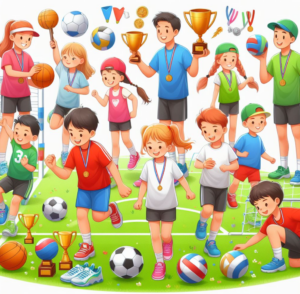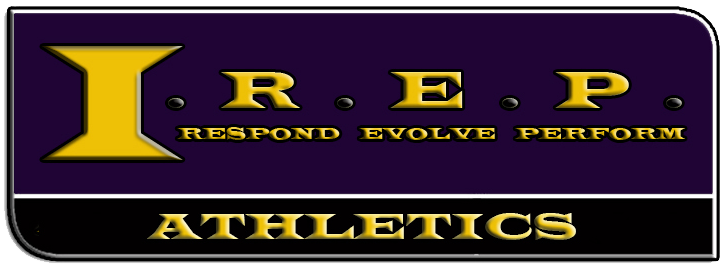At the heart of any effective youth sports training program lie its foundational pillars: physical conditioning, skill development, psychological guidance, and injury prevention. These areas form the bedrock upon which athletes can build their sporting careers.
Physical Conditioning
 Physical conditioning stands as the cornerstone of any youth sports training program. It is through diligent and targeted conditioning that young athletes build the foundations for future success in their chosen sports. In the context of youth development, physical conditioning must be approached with a keen understanding of the physiological and developmental stages inherent to children and adolescents.
Physical conditioning stands as the cornerstone of any youth sports training program. It is through diligent and targeted conditioning that young athletes build the foundations for future success in their chosen sports. In the context of youth development, physical conditioning must be approached with a keen understanding of the physiological and developmental stages inherent to children and adolescents.
One of the first elements of conditioning involves fostering basic motor skills and overall athleticism. Exercises focus on coordination, balance, and spatial awareness, all of which are crucial for any athletic endeavor. As children grow, conditioning evolves to include more sport-specific activities, still ensuring that exercises are age-appropriate to prevent undue stress on developing bodies.
Strength training is a critical component, but it must be introduced carefully. Rather than emulating adult weight training regimes, youth strength conditioning often utilizes bodyweight exercises, resistance bands, or light weights with higher repetitions to improve muscular endurance and stability without compromising growth plates or causing injury.
Cardiovascular fitness is another essential aspect, and it can be developed through fun yet challenging activities such as games, relays, and interval training. Running, swimming, cycling, and even dancing can be integrated into conditioning programs to improve heart and lung function.
Flexibility and agility training are also integrated to enhance performance and mitigate injury risk. Dynamic stretching, plyometrics, and drills that promote quick changes in direction equip young athletes with the ability to perform at their best. This type of mobility work is valuable in the context of the sport itself and in avoiding injuries that can occur from stiff or underdeveloped musculature.
Conditioning regimens must be carefully planned to ensure that the intensity and volume are appropriate for the age group and competency level. Overtraining can be a significant risk in youth sports, so it is essential to balance rigorous sessions with adequate rest. Recovery practices, including proper sleep, nutrition, and hydration, are critical components of the conditioning process and should be emphasized by coaches and trainers.
Periodization is another crucial concept within physical conditioning, involving the careful structuring of training and rest cycles to coincide with athletes’ competitive seasons. Young athletes’ bodies are given the time to adapt to the demands placed upon them, and peak performance can be timed to coincide with critical competitions or sporting events.
The role of coaches and trainers in physical conditioning cannot be overstated. Professionals with an understanding of pediatric exercise physiology are best suited to design and implement training programs that are both safe and effective. A well-educated coach will track an athlete’s progress, modifying routines as necessary to optimize development and prevent burnout.
Skill Development
Skill development is a central pillar in the formation of young athletes, and its strategic importance cannot be understated. Within youth sports training programs, the focused honing of sport-specific skills is crucial for athletes to not only improve, but also to gain a deeper understanding and appreciation of their sport. Skill development covers a vast array of proficiencies, from basic techniques to advanced tactics that demand both physical precision and intellectual acumen.
The initial phase of skill development typically centers on introducing young athletes to the fundamental techniques that form the basis of their sport. The efficacy of these sessions lies in their structure, breaking down complex movements into smaller, more manageable components that can be easily understood and replicated by a young mind and body.
As young athletes become more accomplished in these basic skills, the focus of development shifts toward more intricate and specialized abilities. This can include mastering the physical nuances of a tennis serve, the split-second decision-making required in soccer, or the technical footwork in sports like boxing or fencing. Mastery of these techniques often requires countless hours of dedicated practice and repetition, a concept famously referred to as the “10,000-hour rule” which suggests a significant time commitment to achieve expertise in any skill.
Yet, skill development in youth sports is not solely about repetition; it also encompasses strategic understanding. Coaching sessions frequently involve scenarios and simulations where young athletes must apply their skills within context, responding to the ever-changing dynamics of actual competition. The ability to read the game, anticipate opponents’ actions, and make split-second decisions under pressure is just as valuable as the physical aspects of skill.
Critical to this process is progressive overload in skills practice, similar to the concept in physical conditioning. Coaches gradually increase the difficulty of drills and exercises, challenging athletes to refine their skills further. This approach encourages continual improvement and helps prevent stagnation or complacency in training.
Feedback is an integral component of skill development. Effective coaches provide immediate and constructive feedback that guides young athletes toward better performance. This feedback can be verbal, visual, or even through the use of technology, where video analysis can offer a clear perspective on technique and enable athletes to visualize their improvements and areas needing attention.
There’s also an emphasis on cognitive skill development. This is aimed at improving the athlete’s reaction time, decision-making abilities, and overall game intelligence. Through various means, such as game simulations and mental exercises, athletes learn to make smarter decisions which eventually become instinctual during play.
Skill development is tailored to the individual’s learning style and pace. While maintaining high standards is important, it’s also necessary to recognize that each athlete develops at their own rate. Personalized coaching plans that consider an athlete’s strengths, weaknesses, and personal goals can maximize skill development effectiveness.
Psychological Guidance
The psychological component of youth sports training is multifaceted, aiming to cultivate resilience and a growth mindset. In young athletes, the mental aspect of sports can be as demanding and important as the physical, and therefore requires careful and consistent nurturing. Effective psychological guidance assists in building confidence, focus, self-discipline, and the ability to handle pressure—all of which are essential traits for athletic performance and personal development.
Coaches and sports psychologists begin by instilling a foundational mindset geared towards both personal bests and team-oriented success. Part of this process entails setting realistic yet challenging goals that serve as stepping stones for young athletes. By focusing on incremental progress and the factors within their control, young athletes learn the value of perseverance and dedication.
Another key element of psychological guidance is fostering a healthy approach to competition. It is imperative for young athletes to develop a competitive spirit that drives them to excel while maintaining respect for their opponents and the integrity of the sport. Sportsmanship, the ability to win graciously and lose with dignity, is cultivated through the modeling of behaviors by coaches and mentors and reinforced through team culture.
Stress management and coping mechanisms are also integrated into psychological training. Athletes are taught techniques such as deep-breathing exercises, mindfulness, and visualization to manage pre-competition nerves and maintain concentration during critical moments. Emphasizing these strategies helps young athletes manage their emotions, which can significantly impact performance. The ability to stay composed under stress is a skill that will benefit athletes within and beyond the realm of sports.
Confidence-building is yet another critical facet of psychological guidance. Coaches and trainers actively work to build athletes’ self-esteem and belief in their abilities through positive reinforcement and constructive criticism. When young athletes have confidence in their skills and training, they are more likely to perform well and take healthy risks, such as attempting a new maneuver or strategy in competition.
Resilience is a particularly important psychological skill that youth sports training programs emphasize. The reality of any sport is that loss and setbacks are as much a part as victories and accomplishments. Training must therefore involve learning to deal with disappointment and using it as fuel for improvement rather than as a deterrent.
Mentorship within sports settings plays a significant role in an athlete’s psychological development. Coaches often act as mentors, providing guidance and support that extends beyond the technical and into the personal growth of the athlete. An empathetic and supportive coach can make a profound impact on a young athlete’s life, influencing their development of character, resilience, and life skills.
Injury Prevention
Injury prevention in youth sports training programs is a critical consideration that requires a proactive and knowledgeable approach. The ultimate goal is to safeguard young athletes from both acute injuries and chronic overuse conditions that can derail their sporting pursuits and negatively impact their long-term health. A well-designed injury prevention strategy integrates education, proper technique, tailored conditioning, and routine monitoring to mitigate the risks inherent in athletic participation.
Education is the first step in injury prevention. Athletes, coaches, and parents must be informed about the common injuries associated with each sport, their potential causes, and the strategies for preventing them. Understanding the warning signs of overtraining and the importance of rest and recovery can help young athletes acknowledge when they may be pushing beyond their limits.
Proper technique is a fundamental aspect of injury prevention and is an integral part of skill development. Coaches are responsible for ensuring that each athlete executes movements with the correct form. For instance, teaching a young basketball player the right way to land after a jump can prevent knee injuries, while instructing a young baseball pitcher on the correct throwing mechanics can stave off shoulder and elbow issues. Such technical instruction requires a coach’s patience and attention to detail, as the process often involves correcting and adjusting an athlete’s form repeatedly until it becomes second nature.
Conditioning programs tailored to the needs of the athletes are also essential for injury prevention. These programs should focus on strengthening the muscles commonly used in the sport and improving flexibility, balance, and core stability. For example, a soccer player might focus on exercises that strengthen the muscles around the knees and ankles, crucial joints in the sport that are often subjected to high stress.
Regular monitoring of athletes for signs of fatigue, discomfort, or pain is another critical component of injury prevention. Many sports training programs now incorporate periodic assessments to look for issues that may predispose an athlete to injury, such as muscle imbalances or biomechanical inefficiencies. Athletes should be encouraged to report any problems they’re experiencing so that appropriate interventions—such as adjustments in training volume, additional rest, or referral to a health care professional—can be made.
Nutrition and hydration play pivotal roles in injury prevention. A diet that provides the necessary vitamins, minerals, and macronutrients supports muscle recovery and overall body repair. Likewise, adequate hydration is essential for optimal physiological function and injury prevention. Educational components on the proper fueling for sport can greatly reduce the probability of injuries related to nutritional deficiencies or dehydration.
There is a growing emphasis on the use of protective equipment in reducing the risk of injury. From helmets in cycling and football to shin guards in soccer, appropriately fitting and sport-specific protective gear can absorb impacts or reduce the chance of cuts, bruises, and fractures. Ensuring that this equipment is in good condition and used consistently is an easy but effective measure in protecting young athletes.
